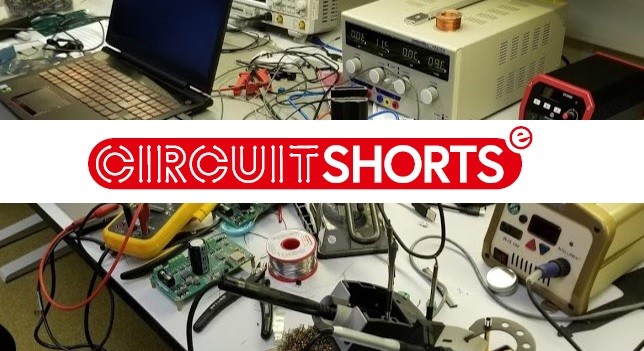Circuit Shorts: Soldering Tips
June 10, 2021
on
on
Like any skill, good soldering requires practice and experience. It’s tempting to think that the quality of soldering comes primarily from how expensive your equipment is, but that’s not necessarily true. An experienced person can do magical things with a €15 soldering iron! There are plenty of fine soldering tutorials available elsewhere, so here I’ll try to give some overall soldering tips from my own experience that helped me wield that iron better.

Need a rapid prototyping solution? Check out ElektorPCB4Makers. You can get two PCB prototypes in three working days!

Simplify Your Soldering
- Buy the best iron that you can afford. If you’re a beginner, buy one that you can also afford to put aside as a backup after you’ve abused it whilst learning. Then get a better one. Or, buy a good-quality iron that has replaceable tips so that the abused one can be replaced.
- Buy good quality materials such as solder, wick, and flux from reputable manufacturers. They’re worth it and have a great impact on your experience and results.
- Don’t solder while hungry, tired, or pressed for time. Being really hungry makes my hand shake more. Tiredness causes me to be less focused. And not having enough time causes me to be careless. The mistakes these cause take much much longer to fix. So, time your soldering for when you’re at your best and free of stress.
- Experiment with the lowest temperature that makes your solder flow and be patient with the solder until it flows on the joint. Observe how it behaves as it flows and take note of what gives the best results. Cranking the temperature up will only damage your tip and reduce the amount of times that you can touch-up a pad before it detaches itself from the board.
- Don’t press the iron against the joint; you’re not accelerating anything. A light touch is all it takes most of the time. If you find yourself needing to press, then you’re either not at the right temperature or not using the right shape of tip for the joint.
- Try to use your pinky as a pivot against the table’s surface while you’re soldering. This gives you an “anchoring” point and vital stability.
- Protect yourself! Use all necessary protective and safety equipment.
More Soldering Tips and Circuit Design Info
Interested in more articles about soldering, circuit design and related topics?- Elektor, "Soldering Essentials for Engineers and Maker Pros," ElektorMagazine.com, 4/9/2019.
- L. Lemmens, "Toolcraft Digital Soldering Station," ElektorMagazine.com, 5/12/2019.
- H. Baggen, "Weller WE 1010," Elektor, Jan/Feb 2021.
- Articles about Soldering, ElektorMagazine.com.
- Subscribe to the "Circuit Shorts" tag for updates when new articles are published.
Need a rapid prototyping solution? Check out ElektorPCB4Makers. You can get two PCB prototypes in three working days!
Read full article
Hide full article



Discussion (0 comments)